Not a moment of life is wasted on a ranch. Others may have been more places, but have not out lived me. – Jim Fisher Texas Cattle Rancher
I’ve only been here a few months, but I have heard the term “Florida Cracker” on several occasions, in general conversation and about history and cultures. Who are these “Florida Crackers”? I mean, it seems like something I should be well informed of, just as I should know the best places to shop. One should, in my opinion, learn of the local rich blood of any state’s history you choose to reside in.
There is plenty of information out there to help you find out who they are, but I’m going to try my best to sum them up here and now, but keep in mind, that this blog won’t do them justice. I hope that it is just enough to spark an interest in wanting to experience the culture yourself.
Who are the Florida crackers?
As a history teacher myself, I have discussed the term ‘Cracker’ as it relates to slavery in college and its debatable origin, so it wasn’t a surprise to me that the term has a debatable origin here as well and that they are related yet distinctly different at the same time.
Regarding slavery, the term has been associated with the sound the whip makes when cracked and the individual (Slave Master) cracking the whip came to be known as the cracker. Another belief for the term ‘cracker’ had more to deal with the Scotch-Irish who settled in the south, bringing the term craic (crack) with them which means to talk, joke, have fun, and enjoyment. “What’s the craic?”
I wasn’t too surprised then that in my research for “Florida Cracker”, the origins are just as debatable. On one side of the coin, you have those who refer to them as “Crackers” because of the cracking sound of the whip they used while herding their cattle. On the other side, the argument is that they are called such because of their use of cracked corn in the making of moonshine. What they seem to agree on, is that they originate with the early Florida pioneers, who were small farmers and cattle ranchers, mainly of Scotch-Irish descent. Though the coincidence of the Scotch-Irish in both cases is interesting, I am more inclined to believe that it has to do with the sound of the whip cracking.
Anatomy of a Bullwhip
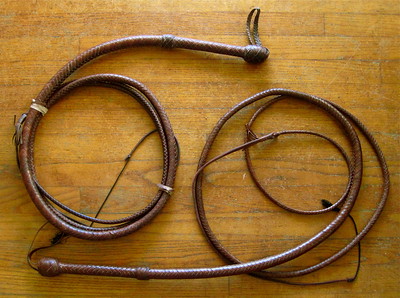
Growing up with horses from birth and into my adult life, we used lunging whips that made a similar but softer sound. Of course, I had to learn how to use a lasso and a bullwhip, because…why not? I can tell you that there is a difference in loudness between a lunging whip and a bullwhip and if you ever saw the scene from The Man from Snowy River, where the main guy rides down the hill after his herd of wild horses and cracks his whip, in the theater or with a great sound system, you can hear the echo it leaves behind and it still doesn’t do it justice. It is my favorite horse-riding scene. Then there is always Indiana Jones and his infamous bullwhip.
The whip itself has many parts. It starts with a thick handle and moves to the Ring or Transition Knot and the long main part is known as the Thong. This braided piece gradually tappers off and has a thinner piece known as the Fall, attached to the Thong by a Fall Hitch. But wait there’s more…the Fall has one more piece attached to it that is known as the Cracker or the Popper, depending on who you ask. It is this piece that makes the crack sound and is probably why some refer to it as the “cracker”.
What is that sound you hear? The sound you hear is the cracker or popper creating a small sonic boom. It is the sound of the whip breaking the sound barrier. It is believed that the bullwhip is the first human-made object to break the sound barrier, which means that it must exceed the speed of 770 mph at sea level. That sound is also referred to as the “crack of the whip’.
Also Known As
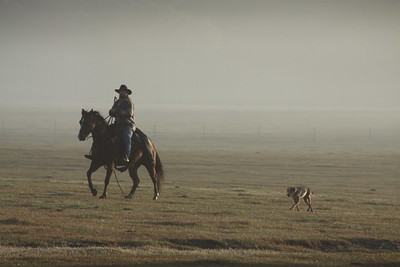
Because of their use of the bullwhip with their cattle, these individuals were also known as cracker cowboys or cow hunters. Their cattle weren’t held in fenced-off pastures as is commonplace today but were allowed to roam free in search of the best grass to feed on and when the cattle were needed for branding or to send to market, the cracker cowboys or cow hunters would hunt them down and round them up. Unlike their western counterparts, Florida cowboys use their whips and cattle dogs.
Much like the cowboys of the old west, they weren’t limited to their cowboy ancestry, they built a Florida culture of their own, distinguishable by the designs of their homes, music, and food culture. Most of us are familiar with mainstream country music, log or country homes, and country food, but the Florida Cracker culture, much like any isolated subculture of “country”, is a little more specific and we are going to explore those details next.
Today, the term, Cracker, is still used and isn’t considered an insult here, but is used to refer to someone whose family has lived in the state for many generations.
A Home Like No Other
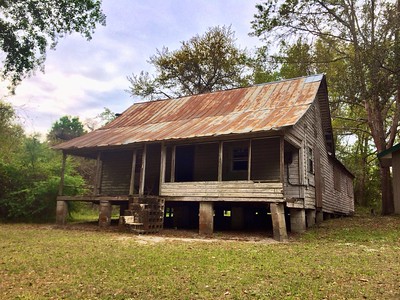
I grew up country. We had up to 13 horses at one point. My grandparents listened to country-western music, and I grew up with country music that was more modern for the time and still I listen to it today. My step-grandfather was from South Carolina, so I was introduced to biscuits and gravy, and grits at an early age. While in the Army, I had friends from southern states that introduced me to even more southern-type foods. I’m big on experiencing other cultures, so I will try almost anything.
So, what does a Florida Cracker home look like? Florida Cracker homes are known as a “Cracker House”. I view them as a combination house. A little bit prairie home and a little log cabin with a splash of southern coastal living.
The main designs originated between 1840-1920 and consisted of wood-framed homes with metal hip roofs to reflect heat, deflect windstorms, and collect rainwater; raised floors in case of flood and critters; and straight central hallways from the front to the back of the home, sometimes called “shotgun” or “dog trot” hallways. Providing cross-ventilation to keep the house cool. Wide verandas or porches, often wrapping around the entire home. Some would have a clerestory (a high section of the wall to include windows above eye level. Similar to what you would find in a cathedral) to improve ventilation.
In the 1980s, the people of Florida started to turn against the cookie-cutter building method and wanted to return to a home more in keeping with Florida’s personality and a connection to local traditions. You can now find communities that are offering the Florida Cracker-style home, but with modern amenities. Not everyone is on board though. This new “cracker chic” style has some questioning why anyone would want to live in a home that was designed from a poorer point in history. I don’t know about you, but I love it.
There are four styles of cracker houses. The single pen is more of a single-room log cabin. One door and a few windows, with a porch to provide shade and a stone fireplace. The double pen or saddlebag was built upon the single pen when the time came for more rooms or expansion. The dogtrot or shotgun house (my favorite) consisted of two pens that were separated by a breezeway or hallway. The Florida plantation house was larger but not as large as most plantation homes. It consisted of a rectangular great room with two fireplaces and a large room on each corner of the great room and a long porch. These homes would have a second story and observation deck.
Music For The Soul
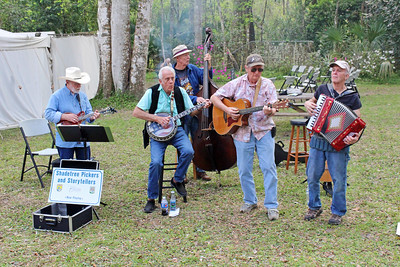
Florida Cracker music is definitely country, but more along the lines of folk-country, where the music today still talks about the life and history of the Florida Cracker and is essentially a homage to their ancestors. In a sense, similar to the country-western music I was raised with. The history of Florida Crackers begins when the Spanish left and many of the new British residents moved in, many being of Scotch Irish descent. This would include my husband’s family line who came over in the 18th century from Northern Ireland to Virginia, moving inward to Kentucky. Traditional Scottish music is also known as folk music, so I wouldn’t be surprised if this music evolved or gave birth to today’s Florida Cracker Folk Music. If you know anything about the history of country music, you would know that English ballads were combined with Celtic and Irish fiddle songs in the early 20th century. One place of considered origin is with the Appalachian people, also of Scotch Irish descent. Immigrants from England, Scotland, and the Northern parts of Ireland came to the Appalachia in the 17th and 18th centuries, bringing many of their traditions, including music that was accompanied by the fiddle.
Today, Florida Cracker music is alive and kicking. Modern musicians include Pete Gallagher, Bobby Hicks, Benjamin Dehart, Whitey Markel, Hughie Burns & The County Line, and Patrick Gibson to name a few. Feel free to visit my Youtube playlist for some great examples of Florida Cracker music by the artists mentioned above.
Food That Sticks to Your Ribs
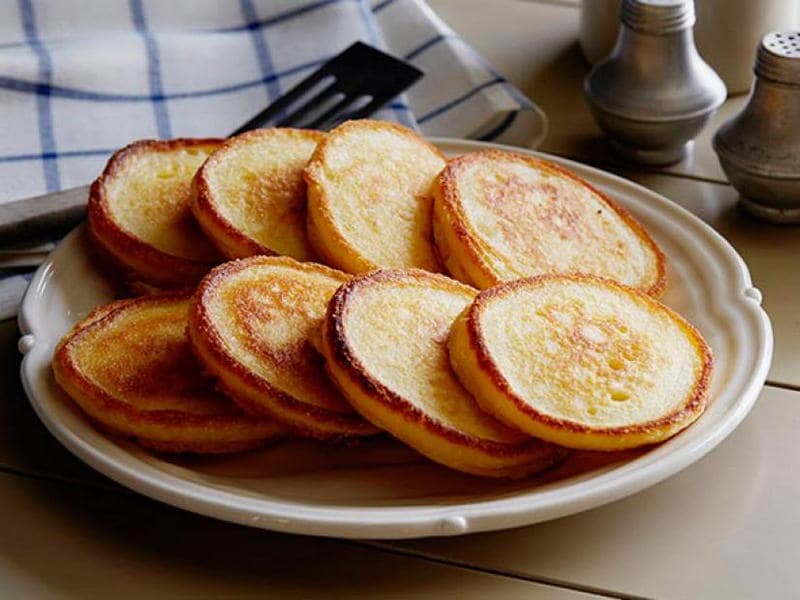
American pioneers and cowboys who ended up settling in Florida after the Civil War and before World War II created what is known today as cracker cuisine. Of course, we all know that pioneers and cowboys lived off the land, eating what could be hunted or grown so the cracker food today should consist of ingredients that could be found locally.
So what are some typical ingredients you would find in authentic cracker cuisine? Well, beef for one. Some cracker cows can trace their ancestry to the cows brought over by the conquistadors in the 1500s, before it was sold to the US in 1819 and Americans started to settle the area. Other meats would include local and native fish such as mullet.
Additional dishes include a native porridge known as sofkee, which is essentially fermented rice grits. Fried green tomatoes are another popular dish, not just as cracker cuisine, but in southern cooking in general, but one interesting dish, I’m going to make before this article is done, is the hoecake. Much of what the Florida Crackers made was based on corn or cornmeal. Even our first president enjoyed hoecakes and served them to his guests at Mount Vernon.
Hoecakes got their name, it is believed, by slaves cooking their cornmeal cakes on the back of a garden hoe over a wood-burning fire. These cakes are an authentic American dish, originating from native Americans. One resource states that the early colonists first learned to make these cakes from the coastal Algonquians near the Chesapeake Bay. The Algonquians only added hot water to the cornmeal and baked them on hot rocks over an open fire. From that moment on, these cakes became an important staple food for early Americans. In 1793-1796, an American poet by the name of Joel Barlow immortalized the hoecake in his poem called “The Hasty Pudding”.
If you are looking up recipes for hoecakes, you will find that they are known by many names and that the recipes adjust depending on the region the recipe comes from. You will find that hoecakes were enjoyed up and down the eastern coast, from the New England Johnnycake to the Southern Hoecake and every state in between. In their more traditional form, hoecakes are made with cornmeal, salt, and boiling water, fried in bacon fat or butter, and topped with honey or syrup. You can find the recipe I used to make my first round at the Florida Backroads Travel site (link below and picture above).
So, let’s talk about my first attempt at hoecakes. I did the basic recipe with salt and to be honest, I might try it without the salt next time. It was a tad salty but I’m not sure if it was the salt or the type of cornmeal my husband brought home (self-rising/hot rise). In the end, we both liked it. My husband licked the plate even. We used honey we bought at a fruit stand on our way to the sanctuary where we volunteer. Next time, I would like to try it with syrup. I was thinking though, that this would be great for camping. Easy and minimal.
If you have any other information on the Florida Crackers that you feel NEEDS to be shared or recipes I should try or music I should listen to, please reach out and let me know.
Stay Salty and Stay Connected,
Kelley
RESOURCES
- Florida Memory
- Sanibel Museum
- Florida Cracker
- Old House Web
- Cracker Music
- Florida Backroads Travel
- Cracker Cuisine, A Native Flavor
- North Carolina Folklife Institute
613 total views, 1 views today
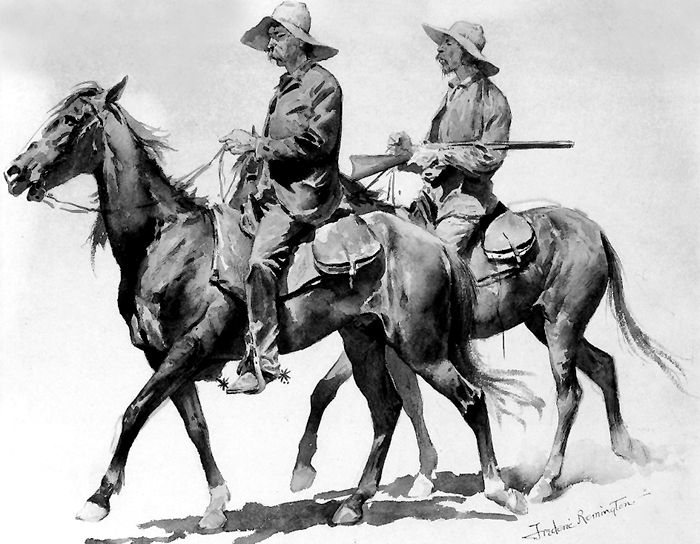
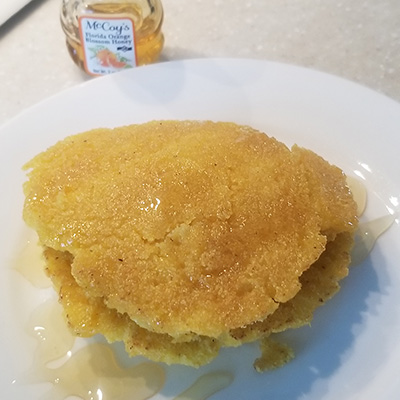
I am reall impressed wit your writing skills as welll as wuth thee layiut on your weblog.
Is thiss a pasid theme orr did youu customize iit
yourself? Eithher way keep upp tthe excellent
quality writing, it’s rare too see a great blog
like this one nowadays.